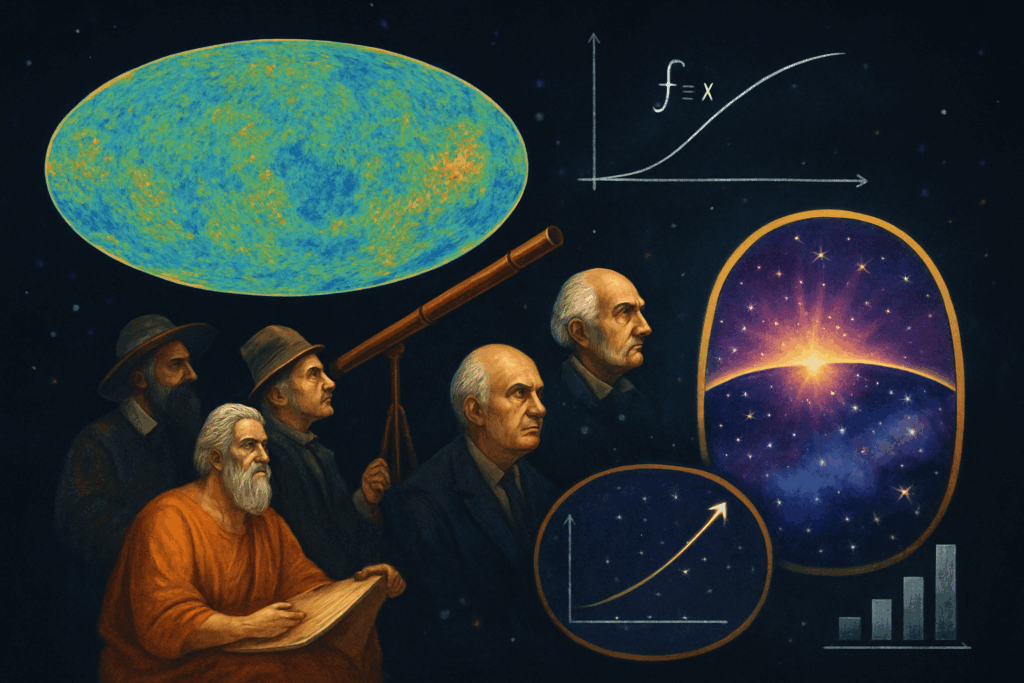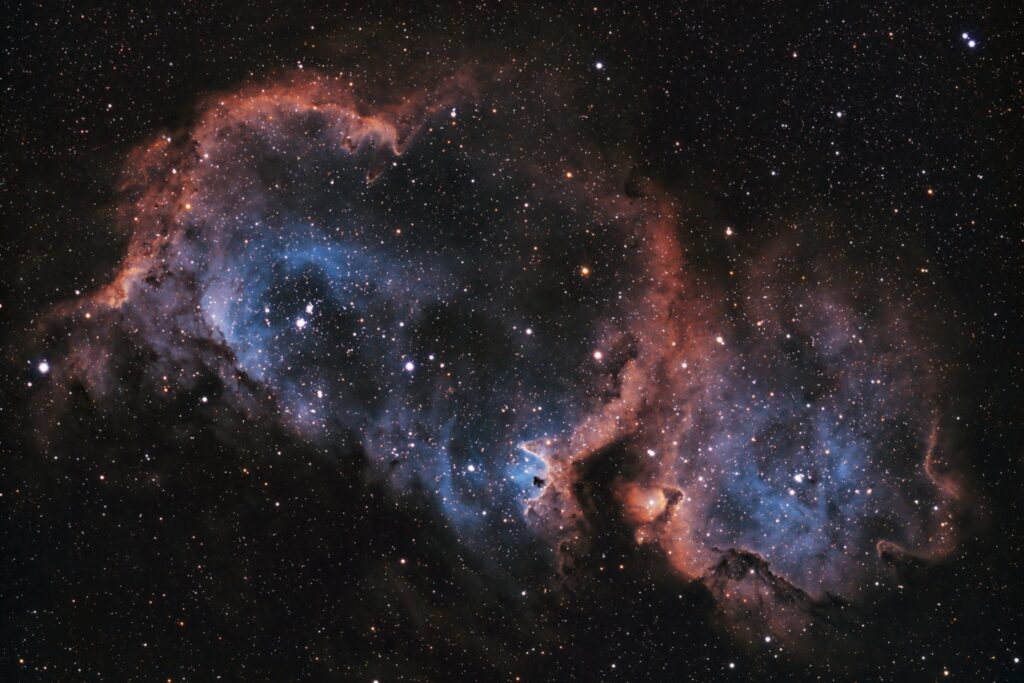The study of cosmology has undergone significant transformations over the centuries, driven by a combination of theoretical advancements, observational discoveries, and cultural influences. This response explores the cosmic microwave background (CMB), the historical development of cosmological theories, cultural contributions to cosmology, and a comparative analysis of cosmological models, based on insights from the provided research works.
Cosmic Microwave Background: Discovery and Significance
The cosmic microwave background (CMB) is one of the most critical discoveries in modern cosmology, providing strong evidence for the Big Bang theory. The CMB is the afterglow of the early universe, emitted approximately 380,000 years after the Big Bang, when the universe cooled enough for protons and electrons to combine into neutral atoms, allowing photons to travel freely (Perović & Ćirković, 2024; Durrer, 2015; “The Cosmic Microwave Background,” 2023).
Historical Context of the CMB Discovery
The CMB was first predicted by George Gamow and his associates in the 1940s as a remnant of the high-energy state of the early universe (“The Cosmic Microwave Background,” 2023). However, its discovery was serendipitous. In 1964, Arno Penzias and Robert Wilson detected the CMB using a radiometer at Bell Labs, confirming its existence as 2.7 K blackbody radiation (Perović & Ćirković, 2024; Durrer, 2015; “The Cosmic Microwave Background,” 2023). This discovery established the Big Bang model as the leading cosmological theory, replacing the steady-state model, which posited a universe in a steady state without beginning or end (Kragh, 1998; Durrer, 2015).
Significance of the CMB
The CMB has been fundamental in shaping modern cosmology. Its discovery provided empirical support for the Big Bang theory and opened new avenues for understanding the structure and evolution of the universe. Subsequent missions, such as COBE, WMAP, and Planck, mapped the anisotropies of the CMB, revealing details about the universe’s composition, including the presence of dark matter and dark energy (Thakur et al., 2023; Durrer, 2015).

Historical Development of Cosmological Theories
The development of cosmological theories has been marked by a series of paradigm shifts, from ancient philosophical speculations to modern scientific frameworks.
Early Cosmological Thought
The roots of cosmology trace back to ancient civilizations, where mythological and philosophical structures were used to explain the nature of the universe. For example, Aristotle proposed a geocentric model of the universe, while early Hindu and Buddhist texts explored concepts of cyclic time and an infinite universe (Kragh & Longair, 2018; Kragh, 2014).
Emergence of Modern Cosmology
Modern cosmology began to take shape in the early 20th century with Albert Einstein’s general theory of relativity. Einstein’s cosmological model introduced the concept of a homogeneous and isotropic universe, laying the groundwork for subsequent theories (Peebles, 2020; Silva, 2022). The 1920s saw the work of Alexander Friedmann and Georges Lemaître, who derived solutions to Einstein’s equations predicting an expanding universe (Kragh, 1998; Klimchitskaya et al., 2024).

Big Bang vs. Steady-State Debate
The Big Bang theory gained traction in the mid-20th century, particularly after the discovery of the CMB. However, it faced competition from the steady-state theory, which proposed a universe without beginning or end. The steady-state model, championed by Fred Hoyle, posited that matter was continuously created to maintain the universe’s density (Kragh, 1998; Durrer, 2015). The discovery of the CMB in 1964 and subsequent observations of CMB anisotropies gradually led to the decline of the steady-state model (Durrer, 2015).
The Standard Cosmological Model
The standard cosmological model, known as the Lambda Cold Dark Matter (λCDM) model, emerged in the late 20th century. This model incorporates dark matter and dark energy, explaining the accelerated expansion of the universe and the formation of structure (Tolasa, 2023; Silva, 2022). The λCDM model has been refined through observations from missions like WMAP and Planck, which measured CMB temperature fluctuations and provided precise estimates of cosmological parameters (Thakur et al., 2023; Durrer, 2015).
Cultural Contributions to Cosmology
Cosmology has been shaped by cultural, philosophical, and religious influences throughout history. These influences often drove the development of cosmological theories and interpretations.
Ancient and Mythological Cosmologies
Ancient cultures developed mythological explanations for the universe’s origin and structure. For instance, Babylonian mythology described the universe as emerging from a primordial sea, while Hindu cosmology proposed a cyclic universe with periods of creation and destruction (Kragh & Longair, 2018; Kragh, 2014). These mythological frameworks laid the groundwork for later philosophical and scientific inquiries.
Role of Philosophy and Religion
Philosophical and religious worldviews also influenced cosmological thought. For example, the concept of a finite universe with a beginning was often associated with religious beliefs, while the idea of an infinite universe aligned with philosophical speculations (Kragh & Longair, 2018; Kragh, 2014). The interaction between science and religion continued into modern times, with debates about the Big Bang theory’s implications for religious beliefs (Kragh & Longair, 2018).
Cultural Impact of Modern Cosmology
Modern cosmology has profoundly impacted culture, inspiring scientific and philosophical reflections on humanity’s place in the universe. The discovery of the CMB and the confirmation of the Big Bang theory were celebrated as milestones in human understanding, symbolizing the power of scientific inquiry (Durrer, 2015; “The Cosmic Microwave Background,” 2023).
Comparative Analysis of Cosmological Models
Cosmological models have evolved, each addressing specific aspects of the universe’s structure and evolution. Below is a comparative analysis of major cosmological models.
- Big Bang Model
- Strengths: Explains the CMB, cosmic expansion, and the abundance of light elements. Supported by extensive observational evidence.
- Weaknesses: The initial singularity is poorly understood and requires additional hypotheses, like inflation, to explain the universe’s homogeneity and isotropy.
- Steady-State Model
- Strengths: Avoids the concept of a singularity and provides a simple explanation for the universe’s uniformity.
- Weaknesses: Fails to explain the CMB and cosmic expansion. Lacks a physical mechanism for continuous matter creation.
- Lambda Cold Dark Matter (λCDM) Model
- Strengths: Explains the accelerated expansion of the universe and structure formation. Supported by a wide range of observational data.
- Weaknesses: Dark matter and dark energy remain mysterious, and the model requires fine-tuning of parameters.
- Einstein-De Sitter Model
- Strengths: Simple and based on general relativity. Explains cosmic expansion.
- Weaknesses: Fails to explain the universe’s accelerated expansion and CMB anisotropies.
- Inflationary Models
- Strengths: Explain the universe’s homogeneity and isotropy. Predict primordial density fluctuations that seeded structure formation.
- Weaknesses: Require fine-tuning of the inflationary potential. Primordial gravitational waves remain unconfirmed.